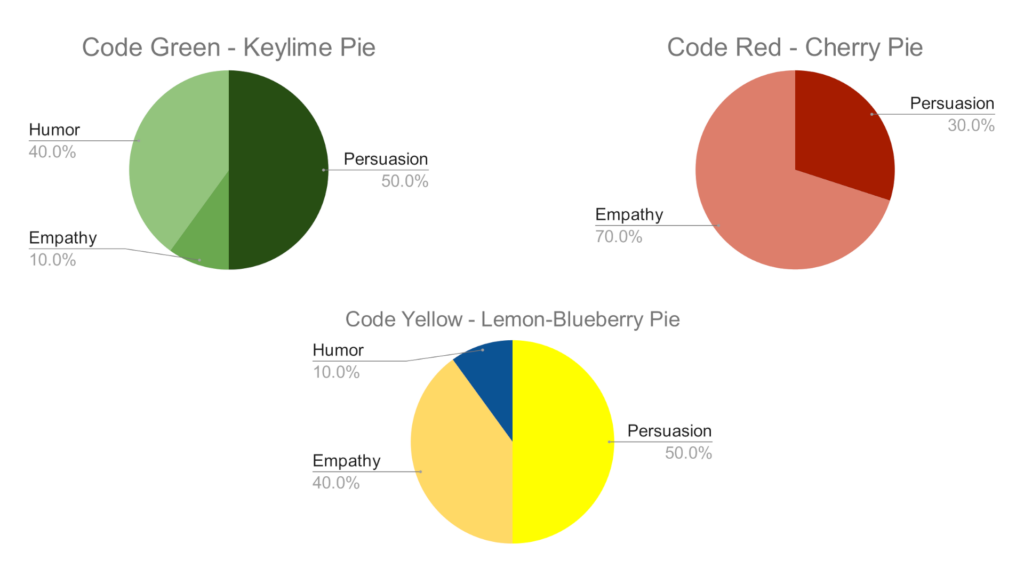Hey, you. Yeah you. You like pie?
Of course you do. But more importantly, your customers do too…
So buckle up your brain because you’re about to discover a super-special unicorn with an over-complicated name.
Introducing…Copy Dyad #3 “The Customer Needs Tri-pie Formula” (or PIES for short) 🤯

It’s the one-and-only “dyad of triads” in the Copy Dyad series… and it looks complex, but fear not.
It’s not nearly as daunting as it seems… but it IS important. Indispensable, actually.
So gather ‘round and listen close.
Because the Customer Needs Tri-pie Formula determines the heart and soul of your advertisement based on your customer’s needs and desires.
First we’ll look at the two triads and then see how they work together.
Triad #1 Levels of Customer Suffering:
- Code Green – Zero or almost zero suffering. You don’t even know there’s a problem until somebody points it out. Usually, these are matters of convenience.
- Code Yellow – you know there’s a problem and you have mild-moderate suffering. These are the common problems that typically stress people out on the daily. Gaining weight, losing your hair, tax problems etc…
- Code Red – MAJOR problem with MAJOR suffering or imminent consequences. Basically, your whole life goes on hold until you fix it. Suffering a heart attack, cancer diagnosis, divorce, bankruptcy, Order 66, that kind of life-shattering stuff.
Triad #2 – Salesman’s Toolkit
- Persuasion tactics – convincing them it’s a good idea buy and to buy from you
- Empathy – feeling their pain, appealing to emotion and expressing sincere understanding and genuine concern for their wellbeing
- Humor – easing tension, creating instant connections, building rapport, lowering defenses, inducing delight and trust
Now pay attention, this is the cool part. (with pie charts!!!)
Here’s how the triads interact: the salesman’s toolbox can be custom tailored to suit whatever problem your customer is facing. And I’ve created rough, non-canonical estimates for how that shakes out.
Code Green – 50% persuasion, 10% empathy, 40% humor (think Dollar Shave Club and Dr. Squatch)
Code Yellow – 50% persuasion, 40% empathy, 10% humor (this is the most flexible section and could easily implement little or no humor and depending on the severity and lead type lean more towards empathy than persuasion. But in that case, empathy would become part of persuasion.)
Code Red – 30% persuasion, 70% empathy, 0% humor (think St. Jude’s Children’s Hospital)
Obviously, these aren’t infallible mathematical calculations and every product and audience is unique, but I hope this gives you a quick and easy-to-understand guideline for auditing your sales message and understanding your customer’s needs:
- Tiny problem – mostly persuasion and humor = key lime pie
- Medium problem – roughly equal amounts of persuasion and empathy = lemon-blueberry pie
- Big problem – mostly empathy with a dash of persuasion = cherry pie
Ultimately it’s up to YOU to assess and meet your customer’s needs, no amount of pie charts can do it for you.
Now go out there and make pies your customers will love you for.
And drop your thoughts in the comments.


